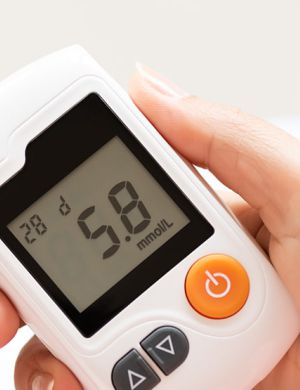
MDR Regulations – Impact on Medical Devices
The EU Medical Device Regulation (MDR) has been in effect since May 26, 2021 and has had a significant impact on the global medical device industry.
Below mentioned are the 7 ways the EU MDR is impacting the industry:
- Increased regulatory requirements: The EU MDR imposes stricter regulations for medical devices, including more rigorous clinical evidence requirements, stricter rules on post-market surveillance, and increased oversight by notified bodies.
- Higher compliance costs: Compliance with the new regulations is costly, and companies must invest in new technology, personnel, and training to comply with the MDR.
- Longer product development timelines: With more stringent regulations, it takes longer for medical devices to obtain regulatory approval, which can delay product launches and increase development costs.
- Fewer available notified bodies: The EU MDR requires that medical device manufacturer’s work with a notified body for certification, but many notified bodies have dropped out of the program, leaving fewer options for manufacturers.
- Increased transparency: The EU MDR requires manufacturers to provide more information on their products, including detailed product information, clinical data, and post-market surveillance reports.
- Impact on non-EU manufacturers: The EU MDR affects not only EU-based manufacturers, but also manufacturers based outside of the EU that wish to sell their products in the EU.
- Ripple effect on global regulations: The impact of the EU MDR is not limited to the EU, as other countries are likely to adopt similar regulations in the future, leading to a global shift in medical device regulations.
Since then, becoming compliant to EU MDR is a real challenge for medical devices companies all over the world, and it could have huge consequences. The new regulations aim to improve the safety and effectiveness of medical devices, but they have also created new challenges for companies that develop and manufacture medical devices. Despite important progress made in the implementation of the Regulation, the overall capacity of notified bodies remains limited for ensuring a successful transition to the new regulatory framework,” the Commission said. “In addition, many manufacturers are not sufficiently prepared to meet the robust requirements of the Medical Devices Regulation by the end of the current transition period. The proposal introduces a longer transition period to adapt to new rules, as foreseen under the Medical Devices Regulation. The new deadlines depend on the medical devices’ risk class and will ensure continued access to medical devices for patients. It will also allow medical devices placed on the market in accordance with the current legal framework and that are still available to remain on the market.
One of the main impacts of the EU MDR on medical device innovation and development is that companies are now required to provide more detailed information about their devices and their manufacturing processes. This has led to an increase in the amount of documentation required, which can be time-consuming and expensive.
Another impact of the EU MDR is that it has increased the regulatory burden on medical device companies. The new regulations require more rigorous testing and clinical data to be provided before devices can be approved for use. This has made it more difficult for small companies and startups to bring new devices to market, as they may not have the resources to conduct the required testing and clinical trials. Additionally, the EU MDR introduces a new classification system that is based on the level of risk posed by medical devices. Higher-risk devices will face more stringent regulatory requirements, which could make it more difficult for companies to bring these products to market.
Notwithstanding essential differences between pharmaceutical drugs and medical devices, especially concerning the role of the end user’s competence in the effective functioning of the product, the MDR will likely cause a similar increase in costs throughout the development and certification process. These changes are most consequential for start-ups developing Denovo medical devices as well as small- and medium-sized enterprises (SMEs) producing medical devices and in-vitro diagnostic devices that were previously less strictly regulated. Such companies may face higher investment needs in order to carry out more rigorous and elaborate clinical trials, usability studies and laboratory validations for clinical assessment by notified bodies, and to cover rising certification expenses owing to increased personnel costs and fees.
Overall, the EU MDR has had a mixed impact on medical device innovation and development. While it has led to increased safety and effectiveness of devices, it has also created new challenges for companies in terms of regulatory compliance and increased costs. However, over time, it is hoped that these challenges can be overcome, and the EU MDR can contribute to the continued growth and innovation in the medical device industry in Europe.
EU MDR Date Changes:
The Medical Devices Regulation entered into force in May 2017 and became applicable on 26 May 2021.
Transition period:
For medical devices covered by a certificate or a declaration of conformity issued before 26 May 2021,
- High risk Class III and Class IIb implantable devices will have until December 31, 2027 to comply with the EU MDR (except sutures, staples, dental fillings, dental braces, tooth crowns, screws, wedges, plates, wires, pins, clips and connectors)
- Medium and Lower risk such as some selected Class IIb, Class IIa and Class I devices will have until December 31, 2028 to comply with the EU MDR
- Class III implantable custom-made devices will have until May 26, 2026 to comply with the EU MDR (but manufacturers must apply for a conformity assessment with their notified body by May 26, 2024)
- Devices placed on the market before the end of the transition period can be made further available without a legal time restriction
- Applications for EU MDR conformity assessment are submitted by May 26, 2024 for legacy devices in accordance with annex VII
The transition period for Class III implantable custom-made devices:
A transition period until 26 May 2026 is introduced for class III implantable custom-made devices, giving their manufacturers more time to obtain certification by a notified body.
For in vitro diagnostic medical device:
The Medical Devices Regulation is complemented by Regulation on in vitro diagnostic medical device that became applicable on 26 May 2022. In January 2022.
Transition period:
Ranging from 26 May 2025 for high-risk in vitro diagnostics to 26 May 2027 for lower risk in vitro diagnostics and to 26 May 2028 for certain provisions concerning devices manufactured and used in health institutions.
Obligations of Manufacturer:
- Only manufacturers with valid MDD/AIMDD certificates (these are still subject to unannounced surveillance audits) and those who have taken reasonable steps to transition to the EU MDR will be granted the extended timelines
- There are no significant changes in design or intended purpose of medical devices (if so, manufacturers must automatically transition to the EU MDR)
- The devices do not post any unacceptable risk to health and safety, patients and users
- A Quality Management System (QMS) is in place by May 26, 2024
Learn how we can help your medical device company navigate the new regulations and stay ahead of the competition
Don’t miss out! Click here to stay in touch.
Categories
- Biopharma (47)
- Consumer Health (15)
- Cosmetics (8)
- Diagnostics (5)
- Digital Health (8)
- Food (2)
- Medical Device (100)
- OTC (4)
- Regulatory Intelligence (5)
- Standards (41)
Recent Blogs
Get the latest updates from Vistaar

Related Posts
CONNECT WITH US

Let's talk about how DDi can help you







